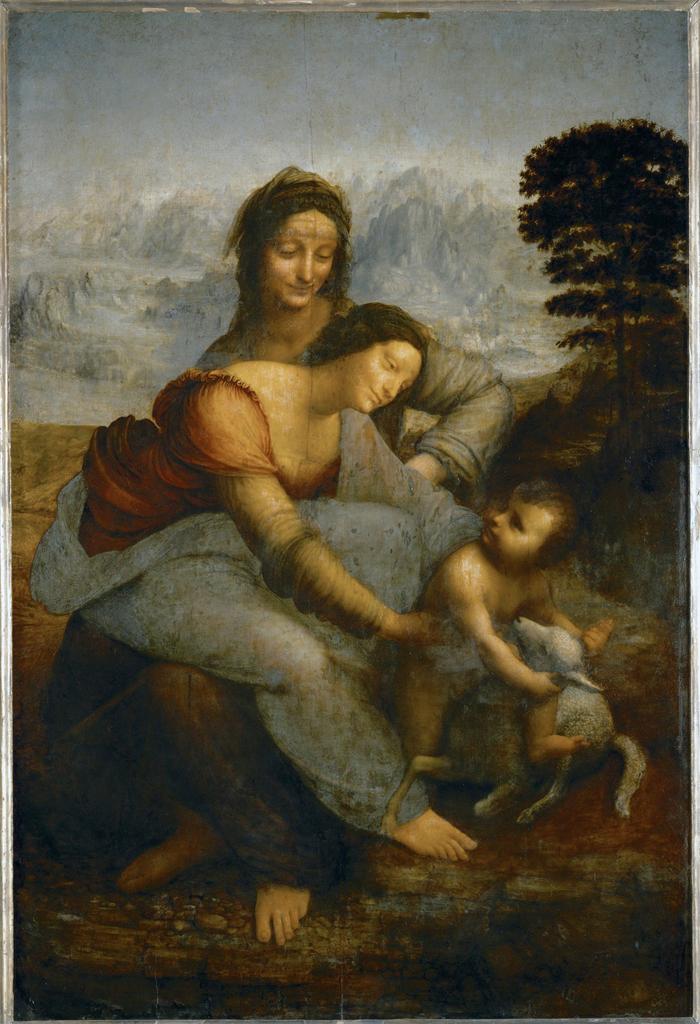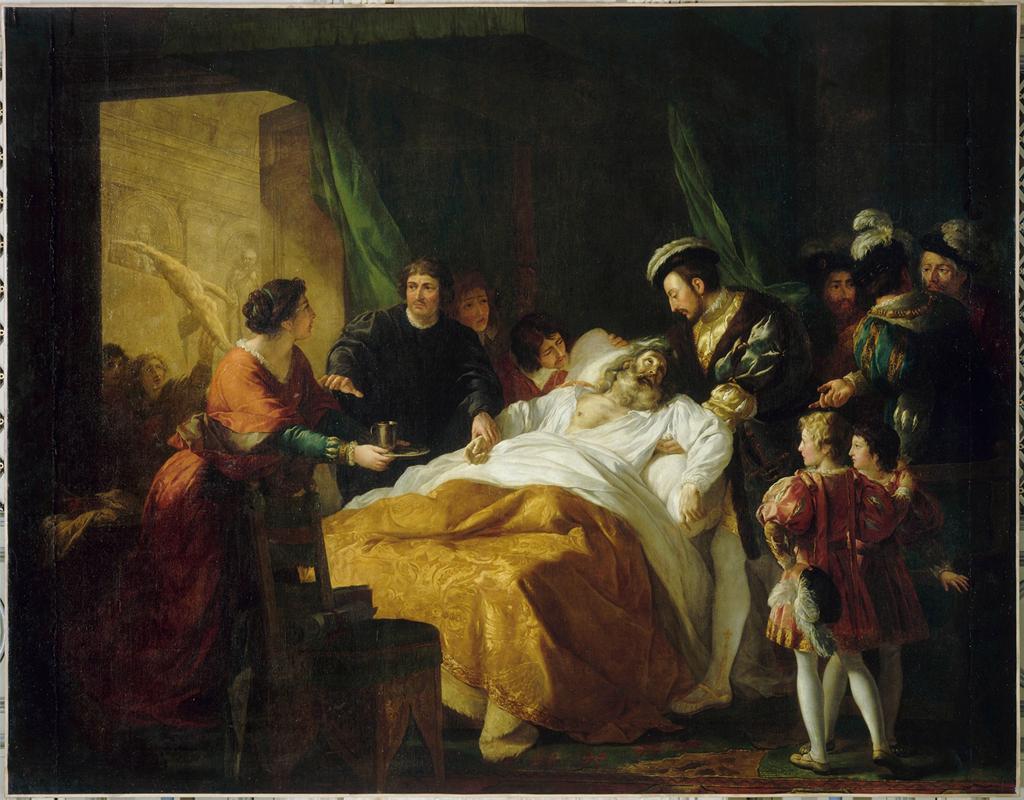Leonardo died on 2 May 1519; it was not, though, until 12 August 1519 that he was buried in Amboise, France. Leonardo entered the French court through an invitation from King Francis I. It is plausible that Leonardo was in Bologna in 1515 and was in attendance during a meeting between Pope Leo X and Francis I. Leonardo’s inventions and artwork intrigued the French King, precipitating Leonardo’s relocation to France between August 1516 and May 1517.
Leonardo spent his remaining years in France where he focused primarily on his inventions. Leonardo’s title was ‘first painter and engineer’ to Francis I, and the King provided the painter with a place to live in the manor house of Clos-Lucé in Amboise, located in the Loire Valley. Clos-Lucé was the summer residence of the French court. Drawings from Leonardo’s final years prove that he was continuing to invent, draw, and write while living in France.
Leonardo’s assistants relocated with him, including his most prominent assistant, a Lombardian artist and nobleman named Francesco Melzi. Scholars proposed that Melzi may have produced some of the physical works from Leonardo’s drawings.
Some of Leonardo’s most famous works were present in France when he died; however, they were probably painted in Italy and brought with the artist when he transferred. These works included The Mona Lisa and The Virgin and Child with Saint Anne. Due to his failing health, Leonardo notarized his will on April 23, 1519. His assistant Melzi was his primary heir and estate executor.
Few men have left Leonardo’s legacy. In Lives, Vasari romanticized his death stating that he died in the arms of the King of France. While this is an intriguing story, there is no evidence that this was the case. In his Treatise on Architecture, Sculptor Benvenuto Cellini quoted Francis I who stated, nearly two decades after Leonardo’s death, that:
“There had never been another man born in the world who knew as much as Leonardo, not so much about painting, sculpture, and architecture, as that he was a very great philosopher.“ (Turner, 52)
The narrative of Leonardo and Francis I influenced neoclassical artists, such as French artists Jean-Auguste-Dominique Ingres (1780-1867) and François-Guillaume Ménageot (1744-1816). An Italian artist named Cesare Mussini (1804-70) also produced a painting that romanticized Leonardo’s death, and shows the High Renaissance artist dying in the arms of the King of France.
References:
Kemp, Martin, ”Leonardo da Vinci.“ Grove Art Online. Oxford Art Online. Oxford University Press, accessed 9 August 2017.
Richards, John C.. ”Leonardo da Vinci.“ The Oxford Companion to Western Art. Oxford Art Online. Oxford University Press, accessed 9 August 2017.
Turner, A. Richard, Inventing Leonardo. (Berkeley: University of California Press, 1993.) p. 52.
Further Reading:
Clark, Kenneth. Leonardo da Vinci. (New York: Viking, 1988).
Kemp, Martin. Leonardo da Vinci, the Marvellous Works of Nature and Man. (Cambridge, MA: Harvard University Press, 1981).
Leonardo da Vinci, Self Portrait (Head of an Old Man), c. 1512-1515, red chalk over traces of stylus on light brown paper, Biblioteca di S.M. il re (Turin, Italy)
Leonardo da Vinci, Mona Lisa, oil on wood, 1503-1506, Musée du Louvre, Paris, France
Leonardo da Vinci, Virgin and Child with Saint Anne, oil on poplar, 1508-1519, Musée du Louvre, Paris, France
François-Guillaume Ménageot, Death of Leonardo da Vinci in the arms of Francis I, oil on canvas, 1781, Réunion des Musées Nationaux (RMN)
Jean-Auguste-Dominique Ingres, Death of Leonardo da Vinci, oil on canvas, 1818, Musée du Petit Palais






Did Francis I attend the funeral of Leonardo da Vinci?
I’ve not seen anything to corroborate the king’s attendance. I’ll leave the thread open for comments if that helps.